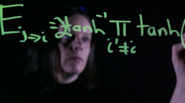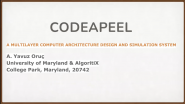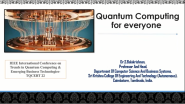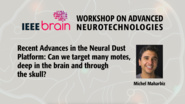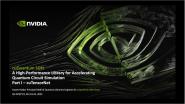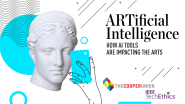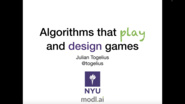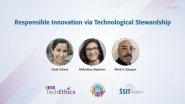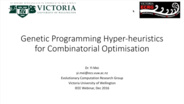Computer Science
Featured Article
Computer science fundamentals
The field of computer science has seen unprecedented growth over the past decade. As demand for software engineers increases, the industry needs to equip budding programmers with the right educational platforms. For those interested in computer science fundamentals, IEEE has created this guide as part of its vast library of educational resources.
This guide covers the fundamentals of computer science, including programming languages, data structures, and computational thinking. By the end of this article, you should have a better understanding of these fundamentals as well as key information about pursuing a career in computer science.
What are the fundamentals of computer science?
The field of computer science is always changing. However, the fundamentals remain consistent. Below is an overview of these fundamentals for those new to studying computer science.
What are the basic elements of computer science?
Computer science encompasses a wide range of information—from basic coding concepts to complex theoretical computing concepts. Despite the breadth of this field, computer science rests on some fundamental principles.
We most commonly associate computer science with programming languages. If anyone wants to forge their way as a programmer, they must learn to code using these languages. On day one, computer science courses introduce basic programming languages, such as Python, Java, and JavaScript. However, to acquire an in-depth understanding of code, you need to understand more than just programming languages.
Every programmer and computer scientist should understand data types and data structures. Also known as a primitive data structure, a data type represents a data attribute telling the computer how to interpret that data. Data types include integers, characters, and Booleans. Programmers use these data types to build data structures, which organize data on a computer for effective use.
Computer science also relies heavily on computational thinking. This problem-solving method uses a standard series of steps to create algorithmic solutions. The computational thinking process breaks down into four parts: decomposition, pattern recognition, abstraction, and algorithm design. We will cover each of these parts in more detail later in this guide.
How should you approach learning computer science?
US students, as well as other students around the world, can pursue computer science through several outlets. Students can study computer science in a traditional classroom setting or via online courses. They only need a functional computer and internet access.
In a conventional academic setting, students can pursue an accredited degree in computer science, data science, or information technology. A computer science education should cover coding fundamentals. However, a well-rounded computer science curriculum will also provide opportunities to study areas of specialization. Specializing in fields such as artificial intelligence or machine learning can help with job placement in the workforce.
As you consider an area of specialization, it is important to keep in mind that the field of computer science continues to develop over time. The field evolves in conjunction with developments in the computer and electronics industry. We have developed the International Roadmap for Devices and Systems (IRDS) to help you keep track of important trends within the industry.
You can also study computer science outside of a conventional academic setting. Online courses and coding “boot camps” have recently risen in popularity. Many of these programs focus only on coding and skip over the theoretical concepts of computer science. Despite their limitations, these programs are a great option for many. Almost anyone can access this method of education, regardless of background or finances. The flexibility of these online learning opportunities is especially valuable for anyone interested in changing career paths while working full-time.
Who can benefit from learning computer science?
Everyone can benefit from learning computer science. As McKinsey Digital notes in an article on coding, Steve Jobs stated that “everyone should know how to program a computer, because it teaches you how to think.”
As technology continues to evolve by leaps and bounds, more leaders have recognized the need to teach computer science at the elementary school level. To support this, the Massachusetts Institute of Technology (MIT) developed a coding language and community called Scratch for children ages eight to sixteen.
Learning coding at an early age gives children an opportunity to learn computational thinking skills. These skills will continue to serve them in many aspects of life—even if they do not pursue a career in computer science.
This is because computer science draws from multiple disciplines. Mathematics, fine arts, linguistics, philosophy, and statistics all make valuable contributions to this field. An understanding of computer science can definitely provide anyone with a career boost. But perhaps more importantly, acquiring skills in this field can make anyone a more well-rounded professional.
Learning programming languages
The first computers arrived in the 1940s. But programming languages did not appear for a while longer. After a few decades, Pascal and C arrived on the scene. These languages form the foundation for many of the programming languages we use today.
Coding languages will continue to evolve in the future. However, to understand where they are going, we first need to understand where we are now.
What are programming languages?
As this curriculum guide explains, we can define a programming language as “the medium through which programmers precisely describe concepts, formulate algorithms, and reason about solutions.”
In other words, a programming language allows a programmer to communicate with a computer. These languages essentially define data structures and create commands. To communicate with a computer, the coding language translates these commands into binary via “compiling.”
Different coding languages have varying levels of complexity and fit different use types. For example, Python has an easy-to-understand code structure. This object-oriented programming language proves its use in desktop and web applications as well as data science and machine learning.
In contrast, SQL has a much higher learning curve. Developers and data analysts primarily use this language for database management in tandem with other programming languages.
There are hundreds of computer languages available today. This number will only increase as the field of computer science continues to evolve.
Why is knowing programming languages a lucrative skill?
In general, computer science provides a lucrative career path. According to the US Bureau of Labor Statistics, the median salary for a career in computer or information technology sits around $88,240. Furthermore, as a 2016 Oracle and Burning Glass Technologies report explains, coding jobs pay particularly well. They pay $22,000 more per year than other “career track” jobs.
However, different programming languages have higher employer demand than others. In 2019, Python, Java, and C topped the charts for top programming languages.
Outside of programming jobs, understanding code can still be valuable for a wide range of workers. Designers, scientists, engineers, and data analysts all benefit from an understanding of coding languages.
For example, many design professionals can benefit from a fundamental understanding of coding for the web. By understanding HTML, CSS, and JavaScript, designers can set themselves apart from their peers.
Additionally, scientists and engineers regularly leverage statistical software and mathematical computing. For example, a medical researcher may use a computational model to calculate how quickly a virus may spread. And a mechanical engineer uses the same skill set to determine the effectiveness of a design.
Even business analysts can use coding knowledge to help make business decisions. By coding macros in Excel, analysts can streamline their workload, review trends, and make predictions.
What jobs does knowing programming languages qualify you for?
Within the field of computer science, knowledge of programming languages qualifies you for a range of jobs that are in high demand.
Software engineers, in particular, need to know programming languages. They use programming languages to create applications—for both mobile devices and desktop computers. Web developers, who specialize in building websites, also often need to know a range of coding languages.
Additionally, computer network architects and database administrators need to know several programming languages to perform their jobs well. And this only scratches the surface of demand for knowledge of programming languages in the field of computer science.
Knowing programming languages, however, does not limit anyone to a career in the technology industry. In fact, demand for IT and computer science skills in nontech fields increased by 40 percent between 2013 and 2018. And of all IT job openings in 2018, 89 percent were in nontech industries.
In short, knowing programming languages can benefit just about anyone at any stage in their career path. As demand for this skill set increases, career opportunities for those who have it will continue to grow.
Data structures
Data structures are an integral aspect of computer science and dynamic programming. All programmers make decisions on how to store data for their applications. They have to decide, for example, whether to use a linked list, a binary search tree, or an array. And their choice will have an impact on the memory usage and speed of their code. Below, we boil down the concept of data structures to its core principles.
What do data structures do?
Essentially, computer scientists use data structures to store and access data. We can divide data structures into two separate categories: linear data structures and nonlinear data structures. The size and type of data structure impacts both algorithm speed and memory usage.
A linear data structure, such as an array, linked list, or stack, arranges data in sequential order. Software applications commonly use this type of data structure because it is easy to implement. However, linear data structures can use memory space inefficiently.
In comparison, developers use nonlinear data structures for artificial intelligence and complex data science. Binary trees fall under this category. Nonlinear data structures have a hierarchical structure. Compared to a linear data structure, a binary tree or binary search tree allows you to search and modify data faster. However, nonlinear structures can be more difficult to create and implement.
Why are data structures important in computer science?
Data structures are foundational to computer science. Every single computer application needs to store and organize data. So programmers need to understand data structure best practices.
Programmers interact with data structures and solve problems using algorithms. At a basic level, algorithms can search, sort, insert, update, and delete data within a data structure. The type of data structure you are dealing with will impact the speed of your algorithm.
Why study data structures and abstract data types?
Anyone learning how to code should take the time to understand data structures and abstract data types. In order to code effectively, software engineers should know the best use for each type of data structure.
To illustrate this, we can compare an array and a linked list. Both represent a type of linear data structure. An array generally takes up less memory than a linked list. However, this data structure lacks a certain amount of flexibility.
In contrast, a linked list is more flexible. This data structure can “share” data between lists—which an array cannot do. Additionally, modifying a linked list is generally much easier than modifying an array. And as an added bonus, a programmer can also construct a binary search tree from a linked list.
Many different types of data structures exist outside of arrays and linked lists. Understanding when to use each data structure is key. It sets an excellent computer programmer apart from the rest.
Computational thinking
On a basic level, we can describe computational thinking as “thinking like a computer scientist.” This method of thinking provides a framework for approaching problems and developing algorithms to solve them.
Below, we dig a little deeper into the steps of computational thinking and how it applies to the field of computer science.
What are the four stages of computational thinking?
The four stages of computational thinking are decomposition, pattern recognition, abstraction, and algorithm design.
Decomposition involves breaking down a complex problem into bite-sized pieces. For example, in the baking world, you could use the principle of decomposition to create a recipe for a cake. The recipe would include a list of ingredients and steps that you need to form the final product.
After you decompose a problem into its unique parts, pattern recognition helps you make connections between the problem and any experience that is available to you. To continue the previous analogy, pattern recognition would draw on your knowledge of other recipes to help you recognize the purpose of the ingredients list.
When coding, programmers can use information from their past experience to help solve current problems. As a programmer gains more experience, he or she will have a greater chance of recognizing the patterns in any given problem.
Abstraction helps separate important information from the extraneous. For example, you may need to create an algorithm that sorts a list of students by age. Available data includes each student’s name, date of birth, and nationality. By using abstraction, you know to focus on the date of birth information—and disregard nationality—to solve the problem.
Lastly, algorithm design creates steps to solve a problem. Programmers can often solve problems in more than one way. However, a seasoned computer scientist should know how to discern the most effective method and set of steps for solving a problem.
How is computational thinking related to coding?
At its core, coding is a method of problem-solving. In general, problems solved with code are complex and require complex solutions. However, with computational thinking, developers can break down a problem into its distinct parts and, in doing so, code solutions.
Over time, programmers can gain more coding experience. This is especially important for the pattern recognition component of computational thinking. With more coding experience, they can recognize patterns from old problems to help solve new problems and create effective algorithms.
How is computational thinking used in computer science?
Computational thinking provides a framework for solving problems using computer science. This universal skill set applies to all programming languages and to jobs in many industries. As the field of computer science evolves, programmers will have to use computational thinking to learn new languages and work in new and developing industries.
In short, computational thinking allows computer scientists to evolve alongside the field of computer science and stay relevant.
Mastering the computer science fundamentals
The future for those entering the workforce with a background in computer science looks promising. As technology evolves, the demand for skilled programmers, computer engineers, and IT professionals will only increase.
If computer science seems like a fit for you, we encourage you to start by studying the fundamentals. By mastering these fundamentals, you can set yourself up for a bright career and future.
Interested in becoming an IEEE member? Joining this community of over 420,000 technology and engineering professionals will give you access to the resources and opportunities you need to keep on top of changes in technology, as well as help you get involved in standards development, network with other professionals in your local area or within a specific technical interest, mentor the next generation of engineers and technologists, and so much more.
